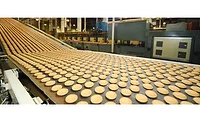Exclusive interview: Q&A on the future of HPP



Food Safety Strategies was recently able to speak with Austin Lowder, Ph.D., food science manager at JBTAvure, about the future of HPP and its benefits for both consumers and food companies.
Liz Parker: HPP is slated to double in six years, what do you think is sparking that growth?
Austin Lowder: There’s a push-pull effect that is keeping HPP on an upward trend. On the demand side, the increasing market share for refrigerated products helps drive HPP utilization as companies try to ensure food safety and maximize shelf life while minimizing label impact. This has been especially beneficial for HPP deployment outside of North America in recent years as that market develops in other regions. On the supply side, a mature tolling network available in North America and the EU makes HPP more attractive to smaller companies, start-ups and even larger companies introducing new product lines that can’t justify the capital requirements of their own machine. We’re also seeing machine reliability and automation levels at all-time highs, which helps manage operating costs.
LP: What are the benefits of HPP for consumers?
AL: An easy answer is enhanced food safety. However, most consumers see safe food as an expectation and don’t directly weigh that benefit when choosing products off the shelf. Consumers are seeing a greater selection of refrigerated, minimally processed, fresh foods, with cleaner labels, due to the applicability of HPP to many refrigerated foods, whether they know it or not.
LP: What are the benefits of HPP for food companies?
AL: Offering flexibility for the production of safe quality food and beverage products is a major reason HPP has enjoyed heightened popularity in recent years. The two largest segments for HPP are currently refrigerated processed meat/poultry products and chilled fruit/vegetable juice beverages, as HPP can help them satisfy regulatory requirements for pathogen control without the use of heat or preservative ingredients. The broader antimicrobial effects of HPP against spoilage bacteria, yeasts, and molds are near universally shared among commonly high pressure processed food categories and can extend shelf life by two to three times for many products. This not only reduces the chance of a negative consumer experience when buying high pressure processed products, but can also buffer product supply chains and extend time between production runs.
Looking for quick answers on food safety topics?
Try Ask FSM, our new smart AI search tool.
Ask FSM →
LP: HPP has been used for twenty years in meat processing, what are new categories of food that are using HPP?
AL: Meat and poultry is still the most popular application for HPP, but Juice and Beverage is poised to overtake it in retail value among HPP applications in the near future. Fruits and vegetables, seafood, and dips/sauces will also continue to enjoy their significant pieces of the HPP pie. However, there are some small but significant up-and-coming applications where we see significant movement driven by the broader market: fresh pet foods, plant based products, including meat alternatives, as well as refrigerated deli soups and hemp and cannabis beverages could all claim capacity on HPP machines in the near future.








